A team of French, Belgian and Belarusian archaeologists and historians are trying to find the traces of the famous Napoleonic battle, on the banks of the Berezina, in Belarus.
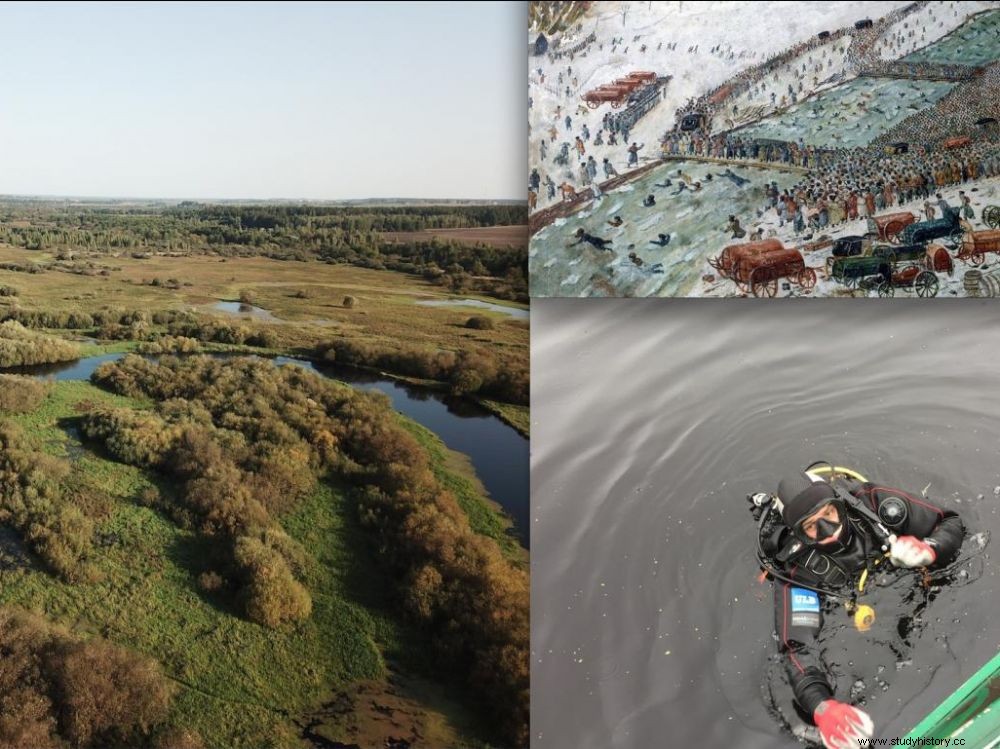
Archaeologists dive into the Berezina, two hundred years after the famous Napoleonic battle.
BIRTHDAY. On November 26, 1812, the Battle of Berezina began. This dramatic episode in history is now 208 years old. Not long ago, Science and Future devoted an article to researchers trying to find traces of this conflict. We suggest you read it below.
Fragments of uniforms, leather belts, shoes, buckles, lead bullets, buttons, bayonets, sabers... At the end of September 2017, a team of French, Belgian and Belarusian archaeologists met for a 5 e exploration campaign along the banks of the Berezina, 75km east of Minsk (Belarus). At the very place where 200 years ago, from November 26 to 29, 1812, one of the most tragic episodes of the retreat from Russia took place. That of crossing the Berezina. This marshy river was an obligatory crossing point for Napoleonic troops on the road to Vilnius.
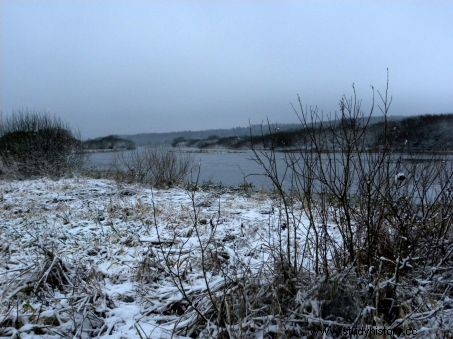
The Berezina in winter. © CEN-J Beaucour
At night, the thermometer drops to -20°C on the banks of the Berezina
On the night of November 25 to 26, to deceive the Russians who were waiting for them downstream, General Eblé's bridge soldiers erected, at the cost of their lives, two trestle bridges over the flooded river, then 100m wide, to allow French troops to cross. On the evening of the 27th, Napoleon and his main army corps managed to reach the other bank of this tributary of the Dnieper. But on the morning of the 28th, the third day of the crossing, many French people were still stuck on the right bank of the Berezina. Thousands of them, frozen (at night, the thermometer dropped to -20°C) are still waiting to cross, when they are trapped by Russian artillery bombardments. It's a general rescue! In total panic, distraught, everyone rushes to the two bridges at the risk of breaking them. This trampling crowd is made up of "straggler" soldiers, mixed with many supply horses and wagons, as well as accompanying civilians, including women canteens, as was customary at the time. On the morning of November 29, many still had not managed to cross the river.
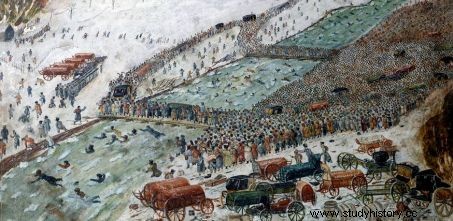
Passage of the Bérézina on November 28, 1812. Watercolor attributed to François Fournier-Sarloveze (1773-1827). Paris, Army Museum.
But to protect his army and cut the road to those of the Russian Kutuzov, Napoleon gave the order, once the soldiers of the rear guard had passed, to burn the two bridges. A disastrous fate then awaits the unlucky. Thousands of people will attempt to cross the icy waters of the Berezina on their own. Many will perish during the passage of this river, whose name today is synonymous with disaster.
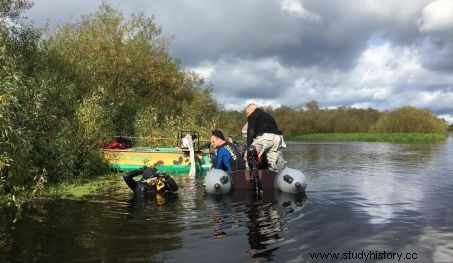
Bérézina:2017 underwater archaeological excavation campaign. © CEN- J Beaucour
"Aquatic excavations where finds follow one another "
Passionate about this dramatic episode in history, since 2012, Jérôme Beaucour from the Center d'Etude Napoléonien (CEN), a physicist from the Institut Lau-Langevin (Grenoble), has brought together archaeologists and historians of Institute of History of the Belarusian Academy of Sciences. “Originally we were looking to locate the graves in which the soldiers of the Grande Armée had been buried by the Russians in the spring of 1813. But very quickly, we carried out aquatic excavations where the finds follow one another he explains.
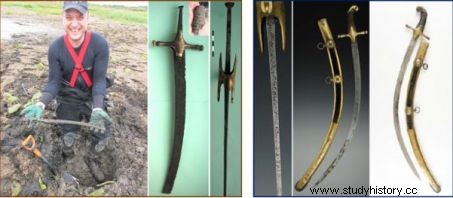
Mamluk saber of the Imperial Guard, discovered in an arm of the Berezina. Of the hundred Mamelukes who accompanied Napoleon, about 80 crossed the Berezina. © CEN-J Beaucour
Thus, during the ten days that the 2017 campaign lasted, numerous pieces of weaponry and uniform buttons were found by the team, joined by Christophe Delaere, underwater archaeologist from the Free University of Brussels, Belgium). This specialist is particularly known for his discoveries of sunken sanctuaries in the Bolivian Andes, at the bottom of Lake Titicaca. “I have developed very effective archaeological excavation techniques , explains the expert. And concerning the Bérézina site, the results are promising .
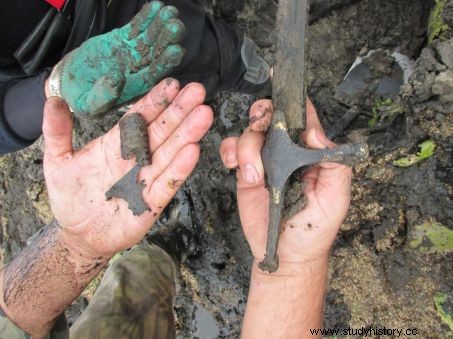
Remains of a saber discovered. © CEN-J Beaucour
Several soundings were thus carried out on the 1km 2 of water and swamps on which research is now focused. Archaeologists have indeed been able to determine, by the discovery of numerous remains, that soldiers had managed to cross the Berezina by finding upstream of the river, fordings used since the Bronze Age...
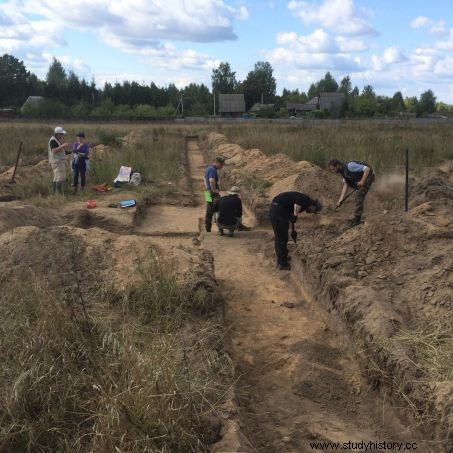
Archaeological surveys carried out in the Berezina sector, in Belarus. © CEN-J Beaucour
